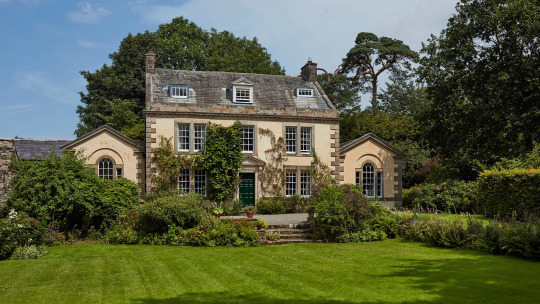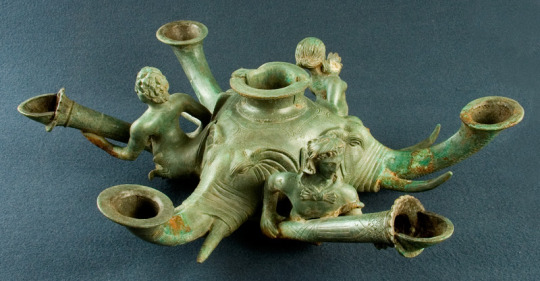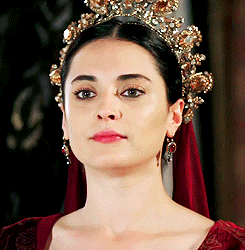#Georgian History
Explore tagged Tumblr posts
Text





Beckside House in Lancashire, England
#british architecture#british history#georgian history#georgian architecture#18th century#1750s#1760s#georgian england
667 notes
·
View notes
Text

Bronze incense burner, Georgia, 3rd-4th century AD
from The Georgian National Museum
816 notes
·
View notes
Text

Everyone knows about Lincoln and Garfield and McKinley and Kennedy, the quartet of America Presidents who fell victim to assassination. Even the most casual observers of Presidential history can probably name the four Presidents who were murdered while in office, and many even know the names of the four assassins responsible for their deaths: Booth, Guiteau, Czolgosz, and Oswald.
There have also been quite a few (in)famous unsuccessful assassination attempts, where Presidents barely escaped with their lives, that many Americans are familiar with, including (but not limited to):
•Richard Lawrence's miraculously unlucky double misfire on the steps of the U.S. Capitol in 1835 which left Andrew Jackson unharmed but resulted in Lawrence -- who would be found not guilty by reason of insanity -- getting viciously pummeled by the cane-wielding President Jackson until Davy Crockett intervened to save the would-be assassin from the 67-year-old President. •The shooting of former President Theodore Roosevelt in Milwaukee as he sought another term in the White House during the 1912 Presidential election. Despite being shot in the chest, Roosevelt decided to go ahead and deliver his campaign speech before being taken to the hospital where doctors discovered that the bullet lodged inside of TR had first passed through a case for his eyeglasses and the thick pages of his speech in his jacket's pocket, lessening the damage from the gunshot. •The attempted assassination of President-elect Franklin D. Roosevelt in Miami in February 1933, just seventeen days in before FDR's Inauguration, which wounded four people and killed Chicago Mayor Anton Cermak. •The ill-fated 1950 attempt by Puerto Rican nationalists to storm Blair House (the temporary Presidential residence during the renovation of the White House) and kill President Harry S. Truman as he was napping. Truman was not hurt, but a White House Police Officer and one of the two assassins were killed during the wild shootout. •President Gerald Ford's trouble with two California women who separately tried to kill him in Sacramento and then San Francisco just two weeks apart in September 1975. •The shocking shooting of President Ronald Reagan in broad daylight from just a few yards away as he exited the Washington Hilton following a speech in March 1981, which left four people wounded and very nearly killed the 70-year-old Reagan just two months into his Presidency.
But what is amazing is that, in this age of instant information and the constant regurgitation of media coverage via the 24-hour news cycle, very few Americans know that there is a man sitting in prison in the former Soviet Republic of Georgia for attempting to assassinate President George W. Bush. What even less Americans realize is how close Vladimir Arutyunian actually came to accomplishing his task.
On May 10, 2005, President Bush spoke to a large crowd at an outdoor rally in Tbilisi, Georgia. In one of the photos at the top of this post, Bush is seen speaking from the stage in Tbilisi. The other photo is of Arutyunian holding a plaid handkerchief close to his chest. Wrapped in that handkerchief was a live hand grenade.
As President Bush spoke, nearby sat his wife, Laura, Georgian President Mikheil Saakashvili, and the Dutch-born First Lady of Georgia, Sandra Roelofs. They had no idea that, during the speech, Arutyunian tossed his handkerchief-wrapped grenade towards the stage. The grenade landed just 61 feet away from President Bush, well within range of causing serious injury, if not death.
Of course, the grenade did not explode. At first, it was thought to be a dud, but upon closer inspection it was discovered that the only reason the grenade didn't explode was because Arutyunian's handkerchief -- used to conceal the explosive as he stood in the crowd -- was wrapped too tightly around the grenade, preventing the firing pin from deploying. A Georgian security official noticed the grenade, grabbed it quickly and disposed of it as Arutyunian disappeared into the massive crowd and President Bush continued speaking.
After Bush's speech was over and once it was recognized that the President had only narrowly escaped a legitimate attempted assassination, Georgian police worked closely with the United States Secret Service, the FBI, and the U.S. Justice Department to investigate the assassination attempt and find the would-be assassin who seemingly melted into Tbilisi after his brazen, albeit unsuccessful attempt on Bush's life. Using DNA evidence and tips from informants, the Georgian police ultimately tracked down Arutyunian two months later. When they went to arrest Arutyunian, a gunfight broke out and Arutyunian killed Zurab Kvlividze, a top counterterrorism official with Georgia's Interior Ministry. Arutyunian was wounded before finally being captured with the assistance of Georgian Special Forces.
The Georgians tried Arutyunian on the murder of the police officer, as well as the attempted assassinations of President Bush and President Saakshvili. Arutyunian was sentenced to life in prison with no possibility of parole. A federal grand jury in the United States also indicted Arutyunian on the federal charge of the attempted assassination of the President of the United States, which is a felony. The U.S., however, has not attempted nor has any potential plans to extradite the failed assassin from Georgia, and Arutyunian will almost certainly spend the rest of his life in a Georgian prison.
#History#Presidents#Presidential History#Presidential Assassinations#Presidential Assassination Attempts#George W. Bush#President Bush#Bush 43#Bush Administration#Presidency#Georgia#Tbilisi#Mikheil Saakshvili#Vladimir Arutyunian#Attempted Assassination of George W. Bush#Presidential Assassins#Assassination Attempts#Assassins#Unsuccessful Assassination Attempts#Politics#Georgian History#European History#Assassinations#Failed Assassination Attempts#Richard Lawrence#Andrew Jackson#President Jackson#Theodore Roosevelt#John Schrank#Attempted Assassination of Theodore Roosevelt
105 notes
·
View notes
Text
Anniversary of Pyotr Bagration’s Death

Rest in Peace 💐
#history#european history#russian history#georgian history#napoleonic era#napoleonic war#napoleonic wars#pyotr bagration#bagration
35 notes
·
View notes
Text

September 2013: A Georgian woman discovers she is trapped behind the border as the Kremlin continues its colonial expansion after the 2008 russian invasion.
#georgia#russia#colonialism#imperialism#2010s#putin#anti imperialism#russian colonialism#georgian history#russian imperialism#2013#eastern europe
30 notes
·
View notes
Text
I love reading about my country's history because to understand it you have to know the history of at least five different empires and also, of course, about the mongols
#they are all heree lmaoo#and thats not to talk about different tribes and all that#obviously we are getting invaded by all of them but thats the price you pay for being literally in the middle of europe and asia#unfortunately🥲#mine#history#georgian history
8 notes
·
View notes
Text

🔪🔪🔪🔪😡😡😡😡
George i, chill.
#George i#georgian history#liebe deutschland#Hanovarians#Hanover#king george#parody#history comedy#horrible histories
4 notes
·
View notes
Text
Controversial origin of Halime Sultan
For many years the life of Halime Sultan had been a mystery. Not only her place of birth,but even her period in harem and tenure as Valide was unknown. Many thought the mother of Mahmud was killed along with him, some said she survived, but was banished. Even her Muslim name was unknown and was mentioned as fulane sultan for quite a long time, until it was found that she was called Halime sultan.

Like almost everything about her life her origin was mostly a mystery, However today it is accepted that she was from Caucasia, particularly from Abkhazia. However, that doesn't make everyone clear about her ethnicity. Confusion mainly comes because the term "Abkhazian" might include several people: Native Abkhazians, who settled here in ancient times, there were two major tribes in Abkhazia ubykh-abkhazs(genetically closer to Circassians) and Georgian-abkhazs(almost genetically identical to western Georgians). However, the number of people in each tribe varied from time to time, however generally Georgian-abkhazians were more loosely-settled, mainly because during the rise of civilization during iron age,pre-classical and classical antiquity, when Abkhazia was part of first Kingdom of Colchis and then kingdom of Egrisi(lazica), both were kartvelian kingdoms, created after unification of native Kartvelian tribes that lived there, two kingdom covered teritories from todays Abkhazia to some parts of eastern Anatolia. Therefore, Georgian-abkhazs promoted that time. In 697, the kingdom of Egrisi devided, into the de-facto kingdom of Abkhazia from 697-780's and the official kingdom of Abkhazia from early 780's to 1008 that included not only modern Abkhazia,but whole teritories of modern eastern Georgia and parts of Turkey and Russia . The official language of the pre 780's kingdom was Georgian, was ruled by Georgian-abkhaz Nobel families and was almost entirely settled by Georgians. After the 780s it was even more dominated by Georgians and that was time, when on the territories of the modern days republic of Abkhazia along with Georgian-abkhazs and ubykh-abkhazs western Georgians actively started to settle. From 1008 to 1490's it became part of the united kingdom of Georgia. After the 1490s it was invaded by Mongolians and divided into western and eastern parts. That is a period when Circassians slowly started to enter Abkhazian territories. Now back to the topic, up until late sixteenth century Abkhazia was Georgian dominated land, in 1570's same time as ottomans, many Circassian tribes started infiltrating Abkhazia and unlike peaceful natives, started to invade homes of weakened Georgians and as a result during the climax of invasion in 1580-90's mass slave trade burst out and thousands of Georgian-abkhaz and mingrelian girls found themselves in ottoman slave market.
Halime sultan was born around 1568-70, therefore in 1580-90's she could have been anywhere from 10-12 to 20-22 years old, considering Mehmed III received his sanjak in 1583, Halime was likely gifted to him that or next year, at very least she was already favourite in 1586, so she was bought quite before that time. So perhaps she was freshly brought little Georgian in the Ottoman slave market? Everything in this theory fits, her age, statistics, fact that slave markets were flooded by Georgians suggest that when we say that Halime was Abkhaz, it means Georgian-abkhaz, not Ubykh-abkhaz and definitely not non-native Circassians.

#history#historical drama#16th century#magnificent century#magnificent century kosem#mc: kosem#ottoman empire#ottomanladies#historical events#georgia#abkhazia#Georgian history#history of Georgia#halime sultan#ottoman sultanas#sultanate of women#sultanas#circassian#women in politics#historical figures#historyedit
32 notes
·
View notes
Text
look I know that they're father and son but the resemblance is so scary


6 notes
·
View notes
Text
I haven't really touched this blog in a few years, as I'd started it as a history side blog, before just simplyfing back to my main, but I am considering starting to use this again to talk 18th and early 19th century shenanigans, with a focus on architecture.
I'm not sure if anyone will be instested in that much, but if you are still following and see this post let me know!
Architecture! Woodworking! Women in trades!
2 notes
·
View notes
Text
@apricusapollo I feel like Solomon I is one of the most if not the most underappreciated king from Georgian history.
6 notes
·
View notes
Text
Also in Russian!
#georgia#history#queer history#georgian history#kinto#queer journalism#queer#gay history#lgbt history#lgbt#also in Russian#the title is misleading#it's about georgian queer history across several time periods#georgian queer history
1 note
·
View note
Text

Gold lion figurine, Georgia, 2nd half of the 3rd millennium BC
from The Georgian National Museum
510 notes
·
View notes
Text
DEDISIMEDI // QUEEN REGENT OF GEORGIA
“She was a Georgian noblewoman of the House of Mukhrani, a collateral branch of the royal Bagrationi dynasty. She was princess consort of Samtskhe as wife of Kaikhosro II Jaqeli (r. 1545–1573) and regent for her son Qvarqvare IV Jaqeli (r. 1573–1581). She played a leading role in a civil war that plagued Samtskhe from 1576 to 1578. After the Ottoman takeover of her principality, Dedisimedi retired to Kartli, leaving the government to her son, Manuchar II Jaqeli, who continued to rule as an Ottoman pasha.”
1 note
·
View note
Text
Drinking Like A Regency Buck - Part 2

Say, you didn’t like port, and actually preferred Scottish whiskey. Then you were in a bind, because during the war with France - and most of the Regency period was one war with France or another - taxes and regulations made trading in Highland whiskey very difficult. Naturally, that did not mean that the trade stopped. And the drinking most certainly did not stop. The solution was obvious: smuggling.
Whiskey-smuggling for the moneyed consumers became so endemic that smugglers started to travel in large paramilitary bands, sometimes disguised as a squad of soldiers or even preceded by pipers. The methods were really quite ingenious, and, if you are interested, I can do a whole post on the tales of Regency whiskey smuggling one day.
Buying from smugglers was not actually some rare and shadowy offense committed in dark alleyways - even Parson Woodforde, a famous diarist who was, well, duh, a clergyman, noted in his journal that he had had a rendez-vous with a smuggler in the evening to replenish his supplies.
0 notes
Text

25th February 1921: The Red Army enters Tbilisi, Georgia, forcing them to join the Soviet Union.
#georgian history#russian history#communism#communist#ussr#1920s#black and white#tbilisi#imperialism#colonialism#russian imperialism#russian colonialism#20th century#georgia#red army#russia#1921
22 notes
·
View notes